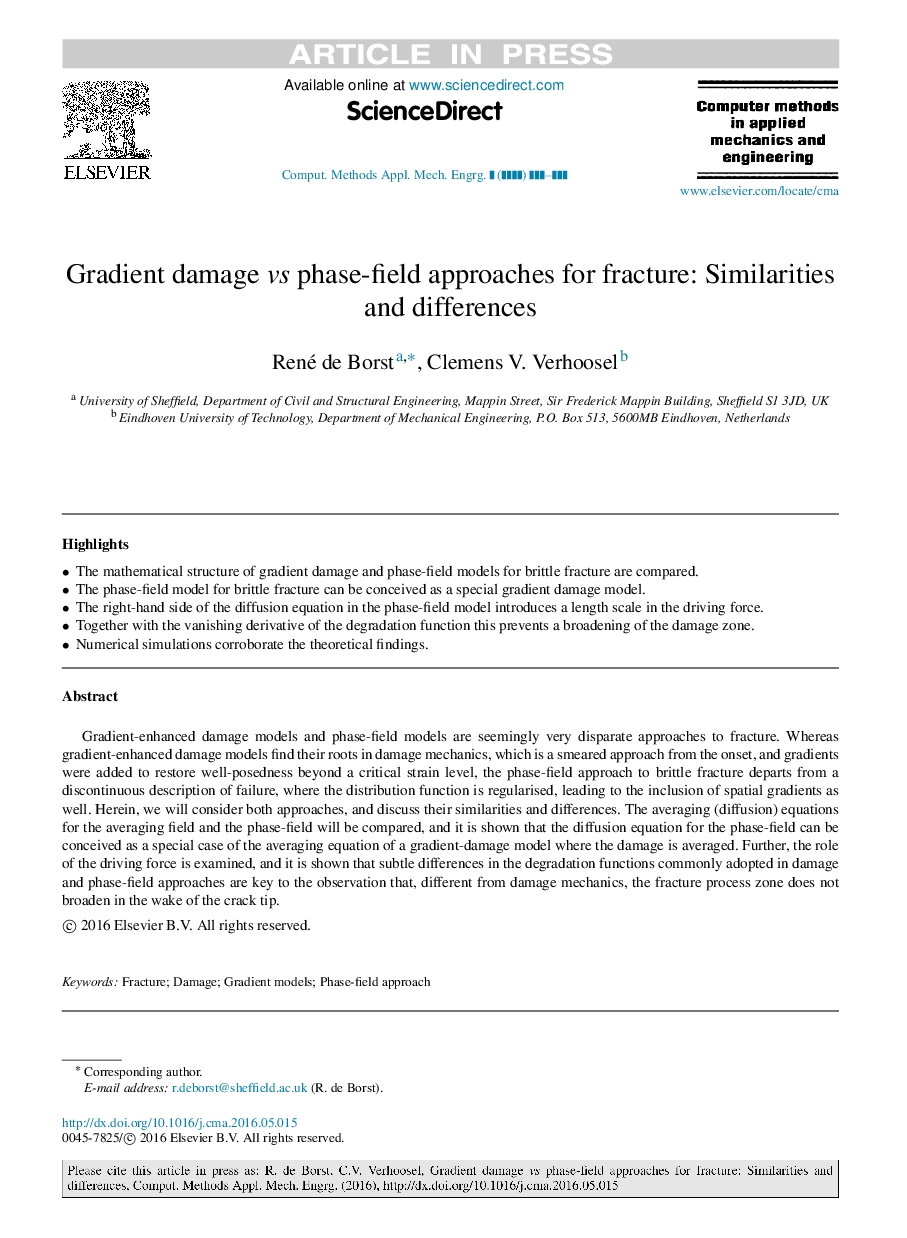| Article ID | Journal | Published Year | Pages | File Type |
|---|---|---|---|---|
| 4964029 | Computer Methods in Applied Mechanics and Engineering | 2016 | 17 Pages |
Abstract
Gradient-enhanced damage models and phase-field models are seemingly very disparate approaches to fracture. Whereas gradient-enhanced damage models find their roots in damage mechanics, which is a smeared approach from the onset, and gradients were added to restore well-posedness beyond a critical strain level, the phase-field approach to brittle fracture departs from a discontinuous description of failure, where the distribution function is regularised, leading to the inclusion of spatial gradients as well. Herein, we will consider both approaches, and discuss their similarities and differences. The averaging (diffusion) equations for the averaging field and the phase-field will be compared, and it is shown that the diffusion equation for the phase-field can be conceived as a special case of the averaging equation of a gradient-damage model where the damage is averaged. Further, the role of the driving force is examined, and it is shown that subtle differences in the degradation functions commonly adopted in damage and phase-field approaches are key to the observation that, different from damage mechanics, the fracture process zone does not broaden in the wake of the crack tip.
Related Topics
Physical Sciences and Engineering
Computer Science
Computer Science Applications
Authors
René de Borst, Clemens V. Verhoosel,
